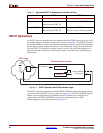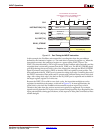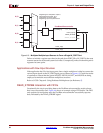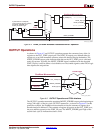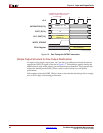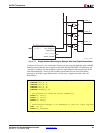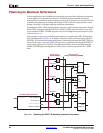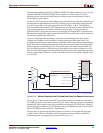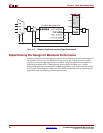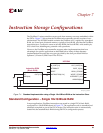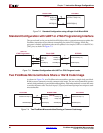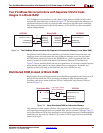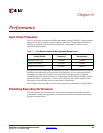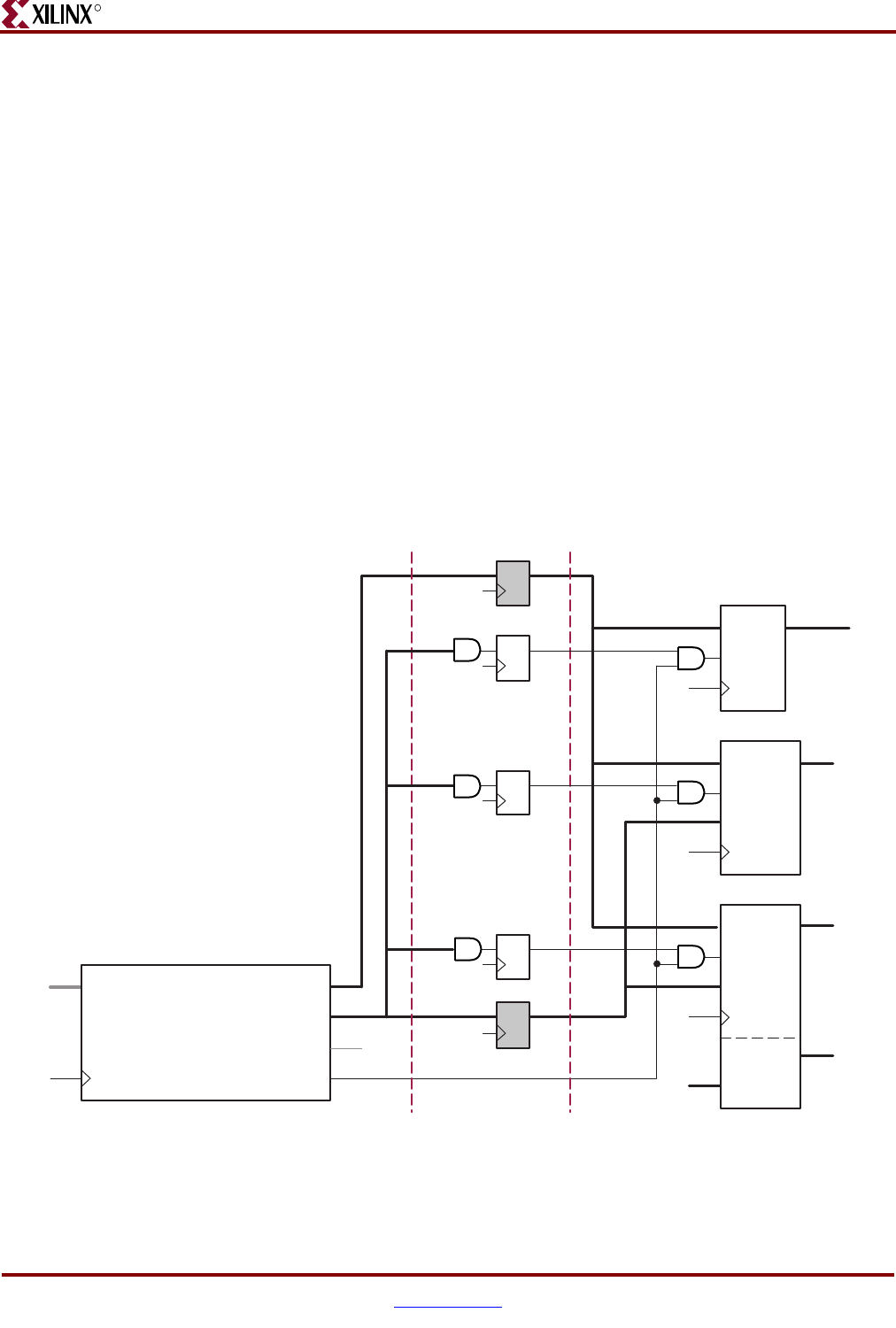
56 www.xilinx.com PicoBlaze 8-bit Embedded Microcontroller
UG129 (v1.1.2) June 24, 2008
Chapter 6: Input and Output Ports
R
Pipelining for Maximum Performance
In most applications, the PicoBlaze microcontroller has more than sufficient performance
to meet application requirements. However, PicoBlaze designs attached to multiple
memory blocks or that have many simple ports may end up using most, if not all, of the 256
available port addresses. Decoding and routing all 256 locations complicates the overall
design, especially for designs requiring maximum performance.
Pipelining the PORT_ID decoding function improves overall system performance. During
an OUTPUT operation, both the PORT_ID and OUT_PORT ports are valid for two clock
cycles while the WRITE_STROBE output is only active during the second of the two cycles,
as shown Figure 6-6.
One approach to improving interface performance is to pipeline the PORT_ID decoding
logic, as illustrated in Figure 6-9. In designs with many ports, the fanout and loading on
the PORT_ID bus limits maximum performance. Fortunately, because the PORT_ID port is
active for two clock cycles, the PORT_ID logic can be pipelined. Each decoded PORT_ID
value is then captured in a flip-flop. Each pipelined decode value is qualified using the
WRITE_STROBE signal during the next clock cycle to actually capture the OUT_PORT
data.
Figure 6-9: Pipelining the PORT_ID Decoding Improves Performance
IN_PORT[7:0] OUT_PORT[7:0]
PORT_ID[7:0]
READ_STROBE
WRITE_STROBE
PicoBlaze Microcontroller
EN
DQ
WE
D SPO
A[4:0]
RAM16X1D (x8)
DPO
DPRA[4:0]
WE
DO
A[4:0]
RAM32X1S (x8)
Clock Cycle 1
Decode Address
Clock Cycle 2
Qualify with WRITE_STROBE
DECODE
DECODE
DECODE
UG129_c6_08_052004





